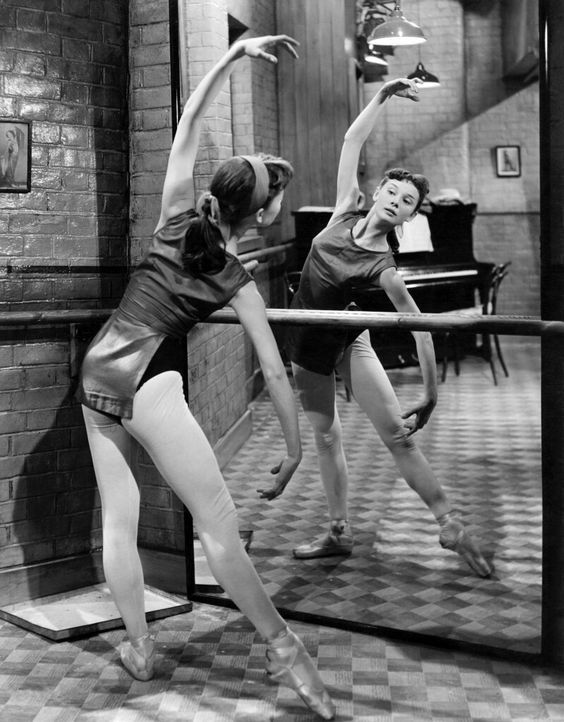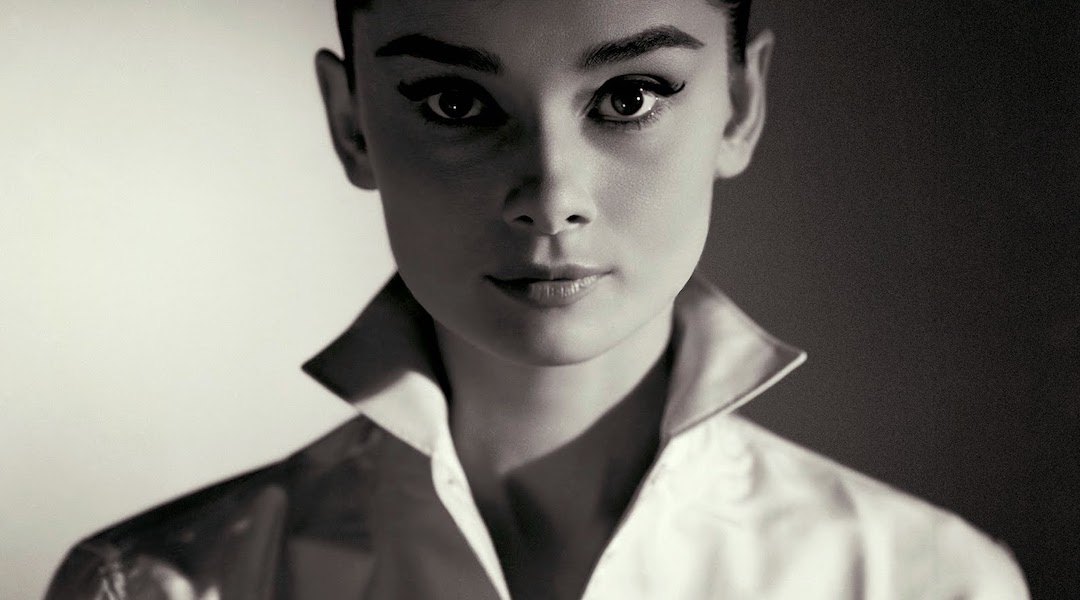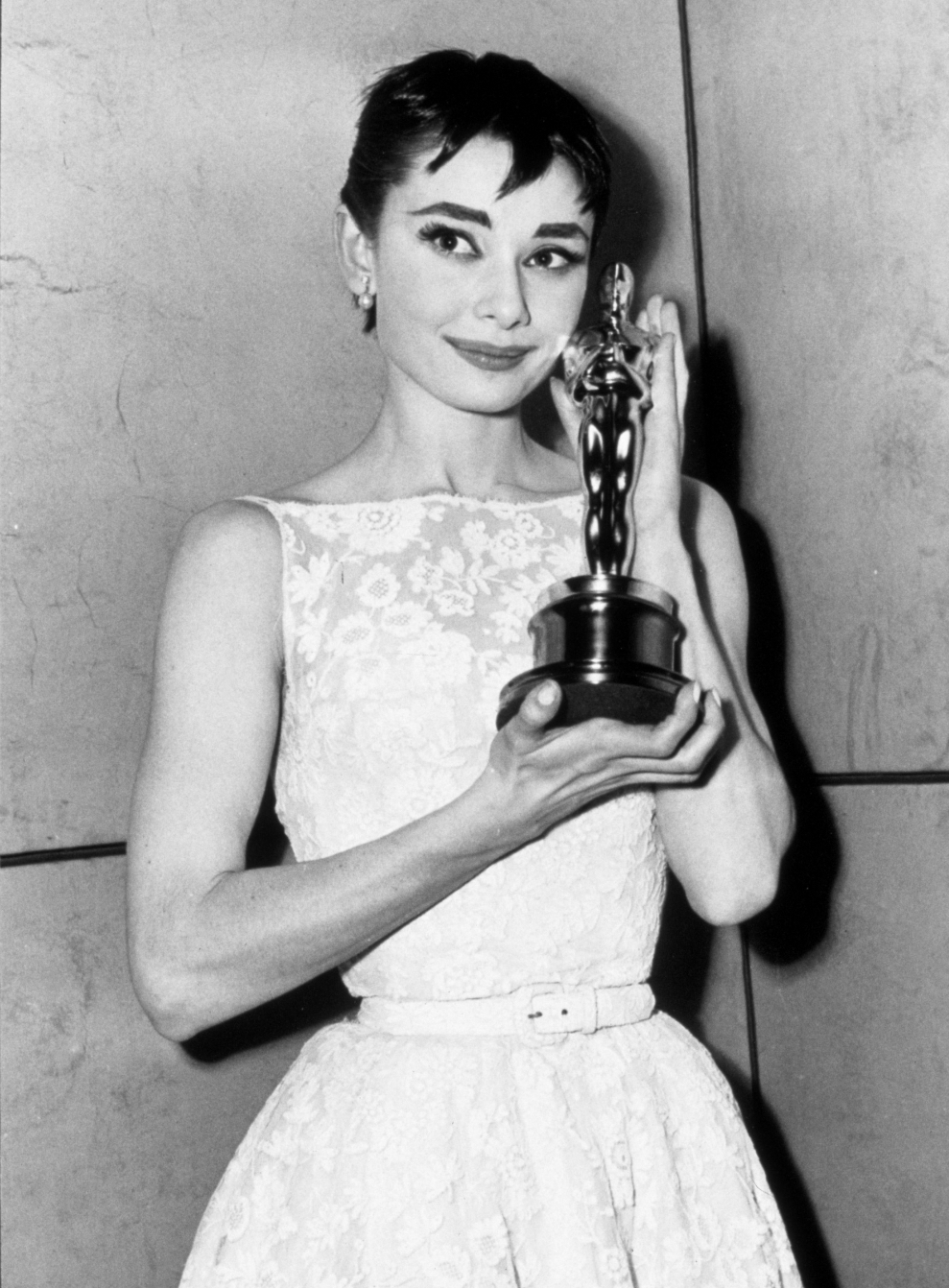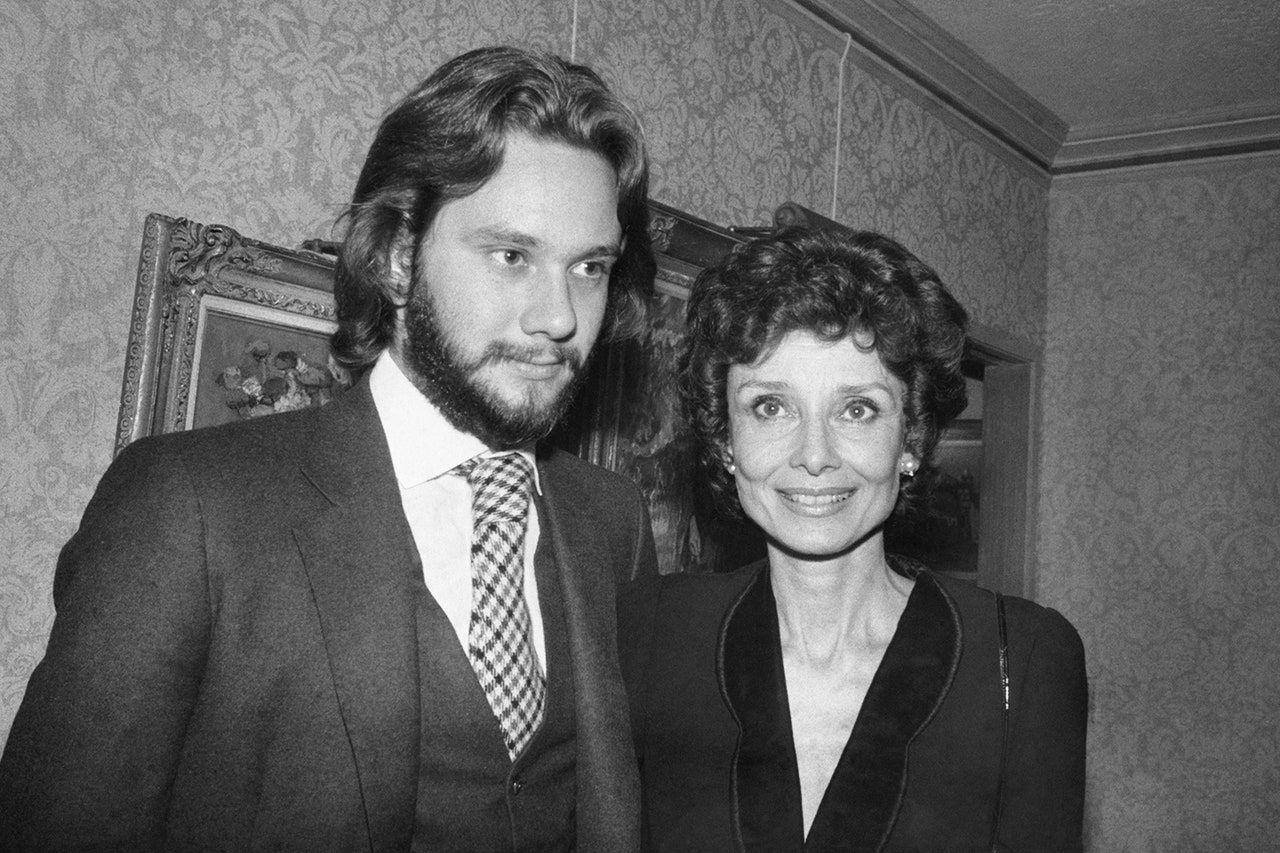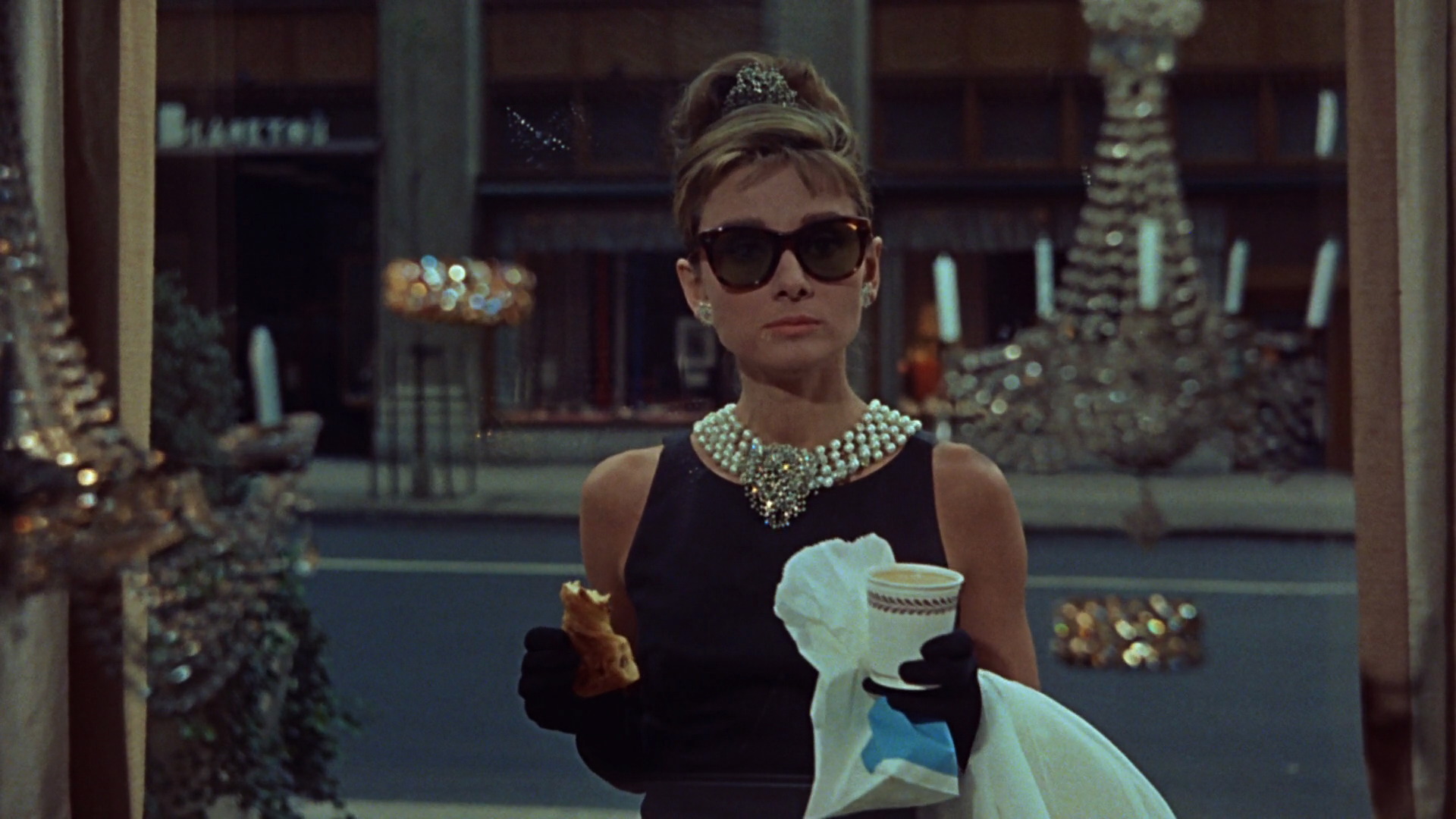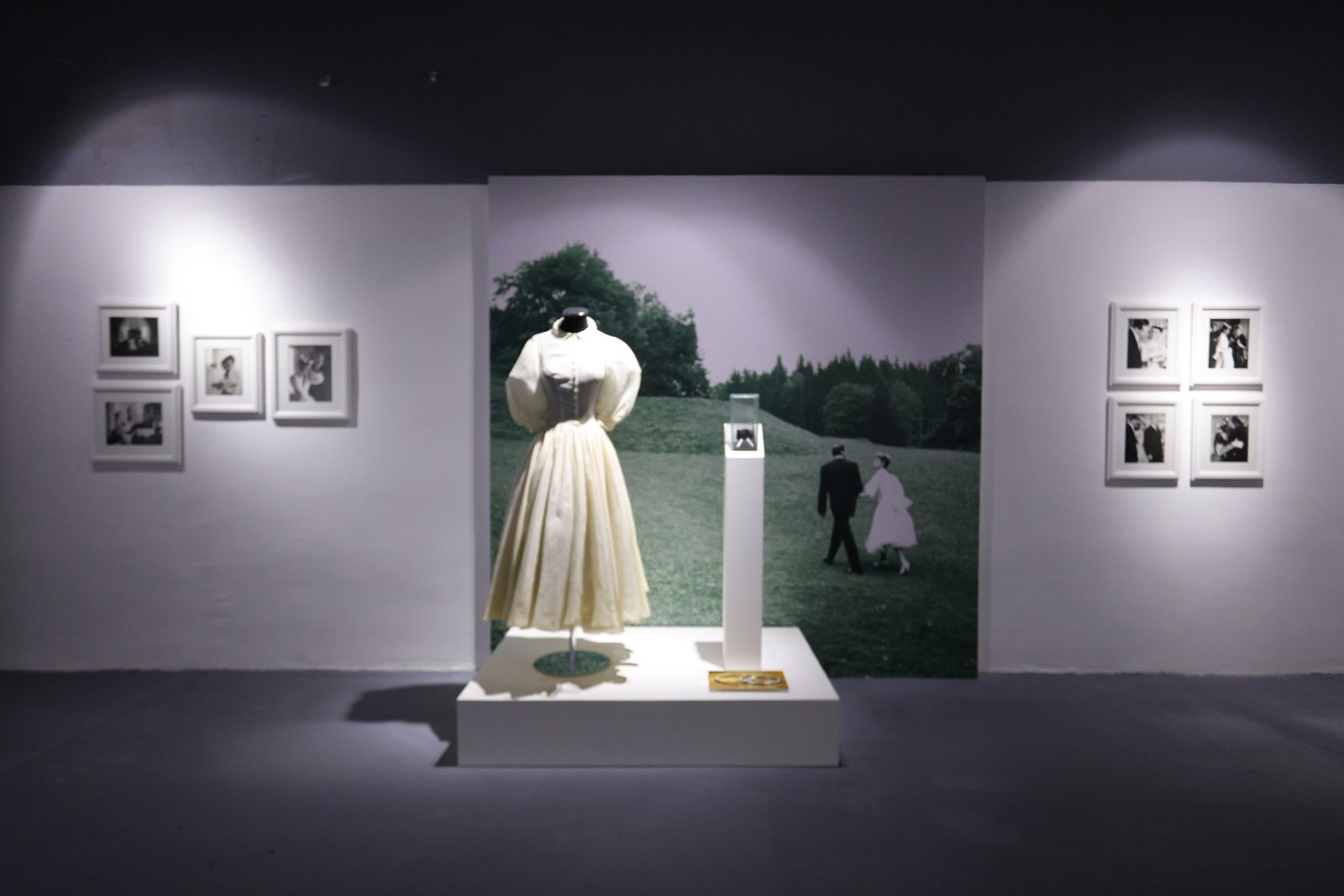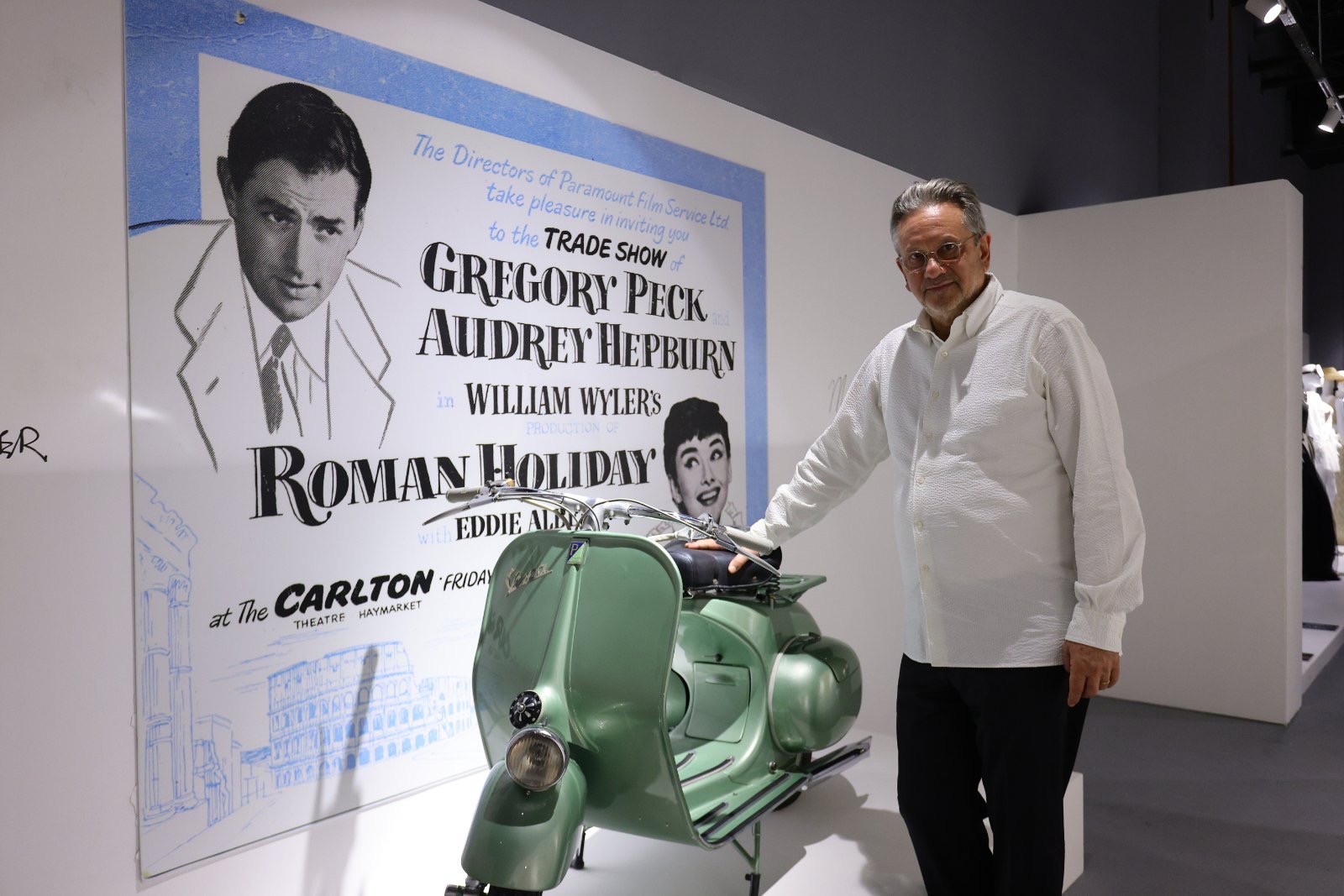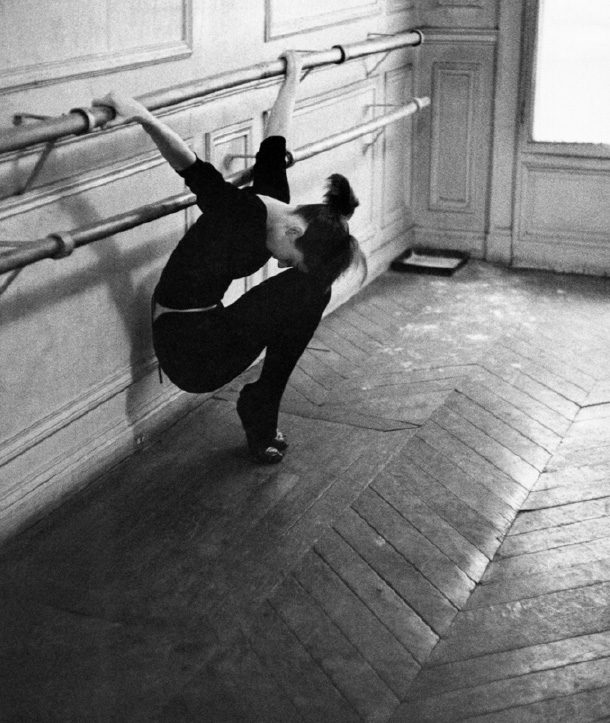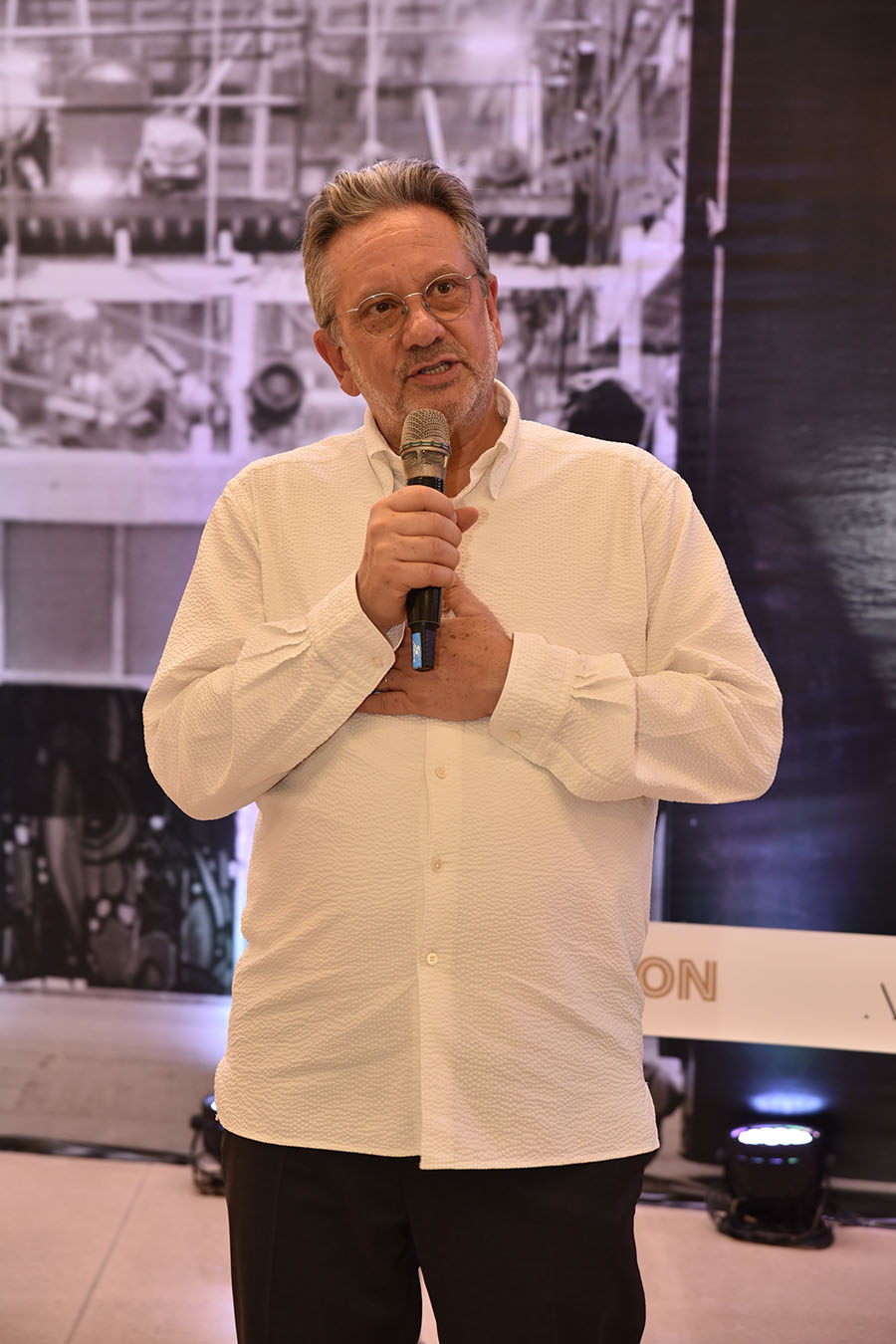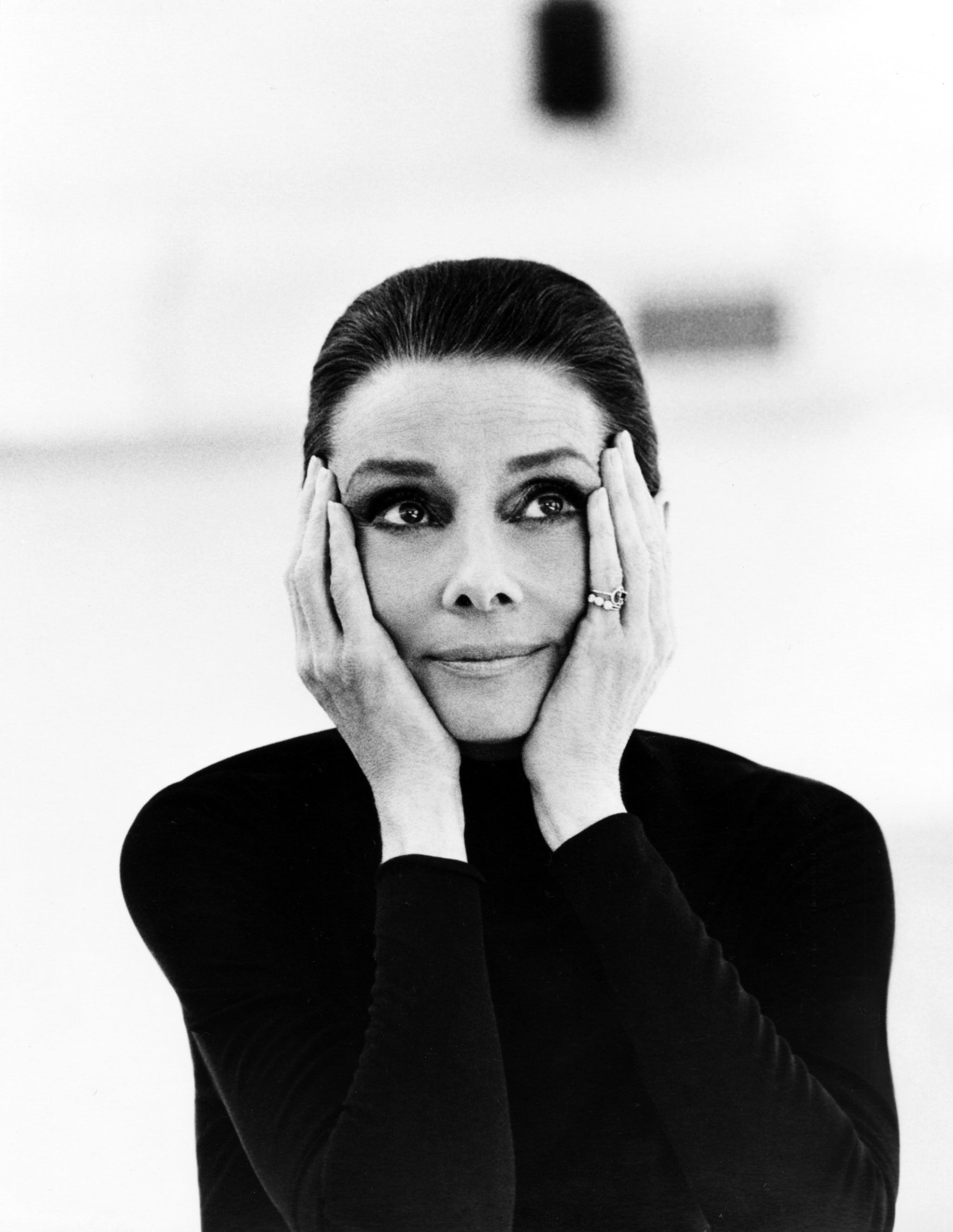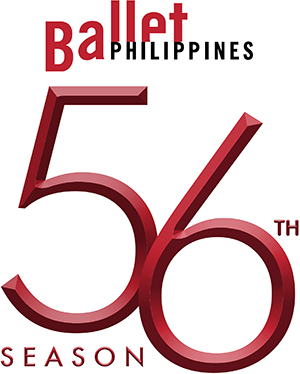

BP Beautiful People
The BP Beautiful People program develops collaborations with talented individuals from outside the ballet sector. Providing a diverse range of tips and tricks that range from lifestyle, well-being and nutrition to fashion, beauty, costume design, and more.
Audrey Hepburn is not just the movie star we’ve grown to love in iconic films. She was also a beloved mother, a passionate humanitarian, an aspiring ballerina, and a child of war. Her son, Sean Hepburn Ferrer, talks to Ballet Philippines about the many different roles she stepped into during her storied life.
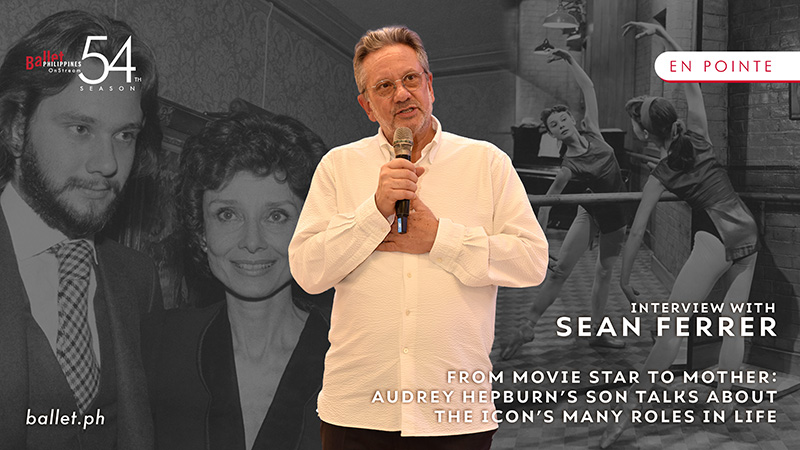
By Chino Hernandez
Sean Hepburn Ferrer sat in the veranda of his hotel room as he chatted with Ballet Philippines over Zoom. He was in sunny Spain for a short holiday, after spending the previous month hectically bringing “Intimate Audrey” to the Philippines. The landmark exhibition explores the life of his mother Audrey Hepburn, beyond her famous Hollywood persona. Ferrer is no stranger to this type of work. Since his mother passed away in 1993, he’s dedicated a part of his career to preserving her legacy through charities, books, documentaries, magazine articles, and three very successful exhibits. However, “Intimate Audrey” is the first of its kind, examining Audrey Hepburn as a woman and mother, rather than a style icon. “She may have worn ballerina slippers and cigarette pants, but she’s beyond that,” he shared. “She’s more about philosophies and thoughts. I wanted to back off the stuff [that most] people call “memorabilia”.
In an effort to present Audrey Hepburn’s personal life in a unique way, Sean has curated countless of his mother’s personal items, which are now displayed at the exhibition space located at S’Maison at Conrad Manila. This includes her wedding dress designed by Hubert de Givenchy, hundreds of unpublished photographs showcasing their family life, Audrey’s personal drawings and writings, items from her work as a humanitarian, and gifts from family and friends. “I preserved everything after my mother passed away,” Sean explains. “She was very good. She kept a few iconic pieces of clothing, and she also kept all the photographs that were taken in her life. At least, all the prints that the photographers gave her.”
“Intimate Audrey” first launched in Manila on July 31, 2023. However, its journey to the Philippines wasn’t exactly seamless. Sean had previously created two exhibitions about his mother’s personal style, and wanted to do something different to celebrate her 90thh birthday. This led to the conception of “Intimate Audrey”, a bespoke exhibit that focuses entirely on the woman, and not the legend. The exhibit would also benefit charities associated with Sean’s “Born in Brussels” foundation. “Intimate Audrey” made its debut in Audrey’s birth town of Brussels, Belgium on her birthday, May 4, 2019, before moving to Amsterdam later that fall. Fate would then deal all of Audrey Hepburn’s Filipino fans a good hand, when FashX co-founder and CEO Carmina Sanchez Jacob stumbled upon the exhibit during a trip to Amsterdam. She was taken by Audrey’s story and was eager to bring the show to Manila. This led to a correspondence with Sean.
“I came to Manila because of the passion of one woman,” Sean says. “Carmina is really the reason why we did this project. She was really passionate about it, and I prefer that over some corporate reason that will get diluted over time.” Over the pandemic, Sean and Carmina meticulously planned how they would bring “Intimate Audrey” to Asia for the first time. While their strategy seemed bulletproof by the time the project was set into motion, they still had to overcome a ton of surprise numbers. For instance, their original location fell through, causing a two-week delay. After making a deal with the SM Group to use the S’Maison museum, they were in serious crunch time. “We really only had about 10 days to do something that normally takes three weeks,” he explained. “So that meant, [we needed] two crews working 20 hours a day, two shifts through the night.” To make things even tougher, every wall in the 12,000 square-feet exhibition space had to be painted by hand, since S Maison’s rules dictated that they weren’t allowed to use certain types of spray paints that might release an odor throughout the posh mall.
In addition to setting up the exhibition space, Sean and his team had to transport thousands of historical items from Europe to Manila without anything being compromised. Beyond juggling customs, logistics, and Filipino importing rules, he had to make sure that his treasure trove of beloved heirlooms remained undamaged. Bigger objects were sent via large crates on sea, but more delicate items (such as original photos and their prints) had to be carried in four climate controlled, air-conditioned containers via air. All their hard work paid off, however, because the end results of “Intimate Audrey” in Manila is truly stunning. The exhibit paints a unique and in-depth biographical story of one of the world’s most celebrated individuals. Guests are able to feel close to Audrey by simply moving through the show, and seeing the items that she and her family considered important in their lives.
One corner has photographs of her family life as a young girl in Brussels, while another features Sean’s baby clothes and baptism gown. There are drawings that show Audrey’s boundless creativity, as well as an array of personal documents such as passports and letters. Despite Sean’s decision to stray away from the “Hollywood-ness” of it all, cinephiles will not be disappointed with “Intimate Audrey”. Among some of the cinematic artifacts shown in the exhibit is her Academy Award for her humanitarian work, the original Vespa showcased in 1953’s “Roman Holiday”, and many rare original movie posters and still photographs. Sean has even gone as far as creating a mini cinema within the venue that features clips from Audrey’s most iconic films.
Sean notes that even though this particular exhibit is about Audrey Hepburn the Woman, it was always going to be hard to separate her from the beloved actress everybody has grown up watching. “I think people see her in films and hope that she was that way,” he says. “And when they ultimately discover that she was the person they perceived on the screen—that she was a lovely, innocent, earnest, and humble person—then it’s a nice reassurance…Of course, you need to understand that her great ability as an actress was to be able to have an emotional megaphone…She was part of the last generation of actors before The Method came about. In the case of The Method, [actors] became the character on the page. For [my mother], she would take the character and bring it into Audrey Hepburn. So it was kind of like a real melding of the two. But to do that, she always spoke of the importance, in acting and in real life, of always being able to put yourself into the other person’s shoes.”
Hepburn’s great ability for empathy really began as a young girl living in German-occupied Belgium. Her father had abruptly left the family in late 1939, leaving Audrey and her mother to scrape by alone, just as the Second World War broke out across Europe. Despite a world of destruction around her, the young girl dreamt of becoming a prima ballerina. Various accounts, including a Time Magazine article, details her life as a dancer in Belgium, where she even helped the Dutch Resistance by raising money through small underground dance shows. The Occupation ended on May 4,1945 (Audrey’s 16th birthday). While her life was spared from the horrors of the Nazis, Audrey suffered from long term health problems due to malnutrition.
In an effort to start a new life for themselves, the Hepburns moved to Amsterdam. Both mother and daughter were taken in by influential ballet dancer Marie Rambert, who trained Audrey to dance. Sean recounts the story: “After two years of studying, [with] room and board and money, [my mother] said to Marie: ‘Do you think I can make it as a Prima Ballerina?’ And Marie, bless her soul, was very honest, and said: ‘First of all, you’re too tall and these little ballet dancers won’t be able to pick you up. But beyond that, you suffered from malnutrition [and] vitamin deficiency so your muscle development is not optimal. Listen, you can work here for the rest of your life. You can become a teacher. You have great [technique], but I wouldn’t hold your breath.’ And my mother was devastated, because she loved Marie and she trusted her. And she knew that when she told her that it came from a place of [true professionalism]. And so, after crying into a pillow for an hour or so, she decided that she can’t spend any more time on this and that she had to move on. There was no time to stop and really feel sorry for herself.”
What happened next is the stuff legends are made of. Audrey Hepburn quickly turned to stage and film acting, and took on as many small parts as she possibly could. While shooting a small supporting role in Monte Carlo, she was spotted by famous French author Collette, who was looking for the perfect girl to play the titular character of Gigi in the Broadway adaptation of her controversial novella. Audrey landed the part and was sent to the United States to prepare. The good notices from “Gigi” eventually caught the attention of Paramount Pictures, who then asked the breakout actress to audition for the role of Princess Anne in William Wyler’s “Roman Holiday”. Her natural charisma and unique screen presence won her the job and a contract with the studio. The rest is history.
Audrey truly left a lasting impact during her short years in Hollywood. While she only appeared in a handful of films during her heyday, she managed to become the film industry’s biggest box office draw, receive five Best Actress Oscar nominations (including one win), and stay relevant as a groundbreaking fashion icon through her collaborations with Hubert de Givenchy. Despite all of the success, Audrey only wanted one thing—to raise a family. At the height of her career, she famously walked away from Hollywood to focus on raising her two boys—Sean and his half-brother Luca Dotti. Sean considers this the biggest gift she ever gave them. “She really wanted to be a mother. Once I [was old enough] to go to school, and I couldn’t travel to set and be with her, or break up long [shooting schedules], she gave it all up at the top of her game,” he shares. During the next few years, Audrey lived in a small Swiss town, committing herself to the role of motherhood. She never once talked about fame or Hollywood life while at home with her children. Later, in his teen years, Sean would discover old 16mm prints of his mother’s films in the attic. Only after screening them did he realize that “mom” was actually the biggest movie star in the world.
Having raised two boys to manhood (Sean would eventually begin a lucrative career as a film producer), Audrey Hepburn found time to start a new vocation—as a Goodwill Ambassador for the United Nations Children’s Fund (UNICEF). But like most things that happened in Hepburn’s life, her role with UNICEF started as a small accident. Hepburn had a cousin who worked as the Dutch consul in Macau, who was responsible for planning a charity concert for the organization every year. After years of persistently inviting Audrey to come to the event, she finally accepted and traveled to Macau. There, she was asked to give a short speech. When she was done, she was approached by UNICEF’s Executive Director Jim Grant, who happened to be in the audience. Sean tells the story of their interaction:
Jim Grant:
“You look so comfortable with all that.”
Audrey Hepburn:
“Well, you know, I’ve lived through war. I’ve been a refugee myself, so I know what these people feel.”
Jim Grant:
“Would you like to do it again?”
Audrey Hepburn:
“Of course. What better way of using the fruits of my career than to give back and to say thank you for what I perceive has been a great gift.”
She officially became a UNICEF Goodwill Ambassador in 1988. Audrey passionately jumped into the work, dedicating the remaining years of her life to help disadvantaged children and women. Some of her notable work with the organization include a mission to famine stricken Ethiopia, visiting polio vaccine projects around the world, starting various initiatives for children who worked and lived on the streets, and began projects to provide drinking water for underprivileged South American communities. In addition, Hepburn designed fundraising cards, gave countless speeches and TV interviews promoting UNICEF’s work, and launched the organization’s “State of the World’s Children” report. She did this all on a salary of $1 a year between 1988 to 1993. Sean notes that Audrey’s experiences in World War II and her ability to empathize with people (which in part, she learned from stepping into the shoes of different characters during her acting career) gave his mother “a unique ability and perspective on how to be a UNICEF ambassador. It gave her the ability to come back to the developing world and talk about it.”
Although Audrey Hepburn passed away in 1993, she remains with us as one of the most beloved figures in history. In her six decades on Earth, she took on many different roles. She began as a child of war struggling to survive, and then became an aspiring ballerina hoping to make it on the world stage. Her fame came in the form of movie stardom in the 1950s, which eventually played a large role in making her a “fashion goddess.” Later on, she would reinvent herself as a humanitarian fighting for Children’s Rights. With Sean Ferrer’s newest exhibition “Intimate Audrey”, we are given a sneak peek into an under-discussed chapter of the legend’s life. She may be the most viral person of the 20th century, but she was also a woman, mother, daughter, and loving friend.
“Intimate Audrey” runs until October 29, 2023 at The Museum at S’Maison in the SM Mall of Asia Complex. Weekday hours: 10 AM-8:30 PM. Weekends: 10 AM-10PM. Tickets are available at SM Tickets. For more information please see their official website or Instagram page.
